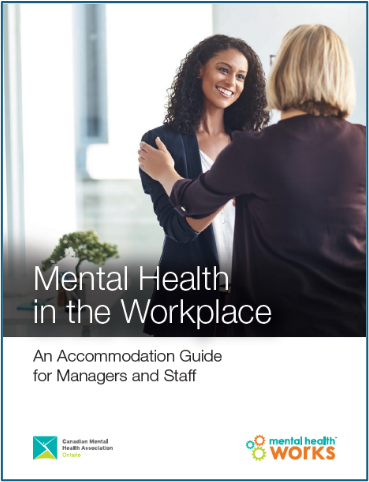We struggle with mental health issues
 The Canadian Mental Health Association of Ontario (CMHA) and school boards throughout the province are producing excellent resources for administrators to work with their staff and students to support them through mental health crises. Many Principals and Vice-Principals are ill-equipped to shepherd their staff through these situations but, thanks to great resources like CMHA’s Mental Health in the Workplace – An Accommodation Guide for Managers and Staff, we are given resources to work with for this process. The People for Education Report of 2018 (pictured above) shows that on average, Principals spend just over 11 hours a week on staff and student well-being. This is approximately one to two days a week being allocated to this!
The Canadian Mental Health Association of Ontario (CMHA) and school boards throughout the province are producing excellent resources for administrators to work with their staff and students to support them through mental health crises. Many Principals and Vice-Principals are ill-equipped to shepherd their staff through these situations but, thanks to great resources like CMHA’s Mental Health in the Workplace – An Accommodation Guide for Managers and Staff, we are given resources to work with for this process. The People for Education Report of 2018 (pictured above) shows that on average, Principals spend just over 11 hours a week on staff and student well-being. This is approximately one to two days a week being allocated to this!
Who is Shepherding the Shepherds?
There are many post-pandemic studies that clearly show that managers’ mental health as measured through the Mental Health Index (MHI) are in fact scoring lower than non-managers. Our Support Services Team has seen a radical surge in Associates needing to step away from work because their own mental health has reached a level that impedes them from doing their daily work. In the same People for Education report, 41.6% of the participating Principals indicated they feel isolated, socially excluded, or left out. This is especially true of administrators in rural communities. As one respondent to the survey stated:
"This job is often a thankless job with competing demands on a daily basis…I feel pressure to perform and work hard and long hours and don’t often feel supported as a single administrator, which is an isolated and lonely position".
Information on mental health and work-related stress was collected by Statistics Canada in April 2023 for workers aged 15 to 69 years as part of a series of supplements to the Labour Force Survey and found the following:
- Just over 4.1 million people indicated that they experienced high or very high levels of work-related stress, representing 21.2% of all employed people.
- The most common causes of work-related stress included a heavy workload, which affected 23.7% of employed people, as well as balancing work and personal life (15.7% of employed people).
- Women (22.7%) were more likely than men (19.7%) to experience high or very high levels of work-related stress.
- It was higher for those working in management (37.3%)
- Also higher in occupations usually requiring a bachelor's degree or above (29.5%).
What Can We Do?
- Build a relationship with your Supervisory Officer. Make sure they know that you need support as well.

- Develop a circle of colleagues that you can confer, and problem solve with. Allow them to provide perspectives about your challenges and listen to their challenges. You’ll find that many of them are the same.
- Put your technology away. Explain to staff that you will respect their personal time and they should respect yours. Most school boards have a work/life balance policy – follow it and ensure others do as well. Emergencies happen – that’s different.
- Set a time frame for work at home. Physically do this! It’s easy to turn an already ridiculous 11-hour day into a 14 hour one.
- Do something for you every day. Whether it’s a hobby, reading a book (for enjoyment), or whatever it is schedule it and do it!